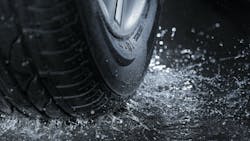EPA develops 6PPD-quinone testing method for stormwater, surface waters
The U.S. EPA announced the publication of a draft testing method to detect 6PPD-quinone — a pollutant derived from tires — in stormwater and surface waters.
Widespread availability of a draft EPA analytical method for 6PPD-quinone provides tribes and local governments with an important tool for better understanding stormwater and surface water quality, to inform how and where to put in place protections for sensitive salmon, trout, and other aquatic life from potentially dangerous runoff. The agency’s draft testing method is available for use now.
“We heard from the Tribes and other governmental agencies that one of the highest priorities for the agency should be the rapid development of a test for 6PPD-quinone,” said Casey Sixkiller, Regional Administrator of the agency’s Region 10 office in Seattle. “In what seems like lightspeed, the agency has delivered. The faster we can identify where problems exist, the faster we can correct them. I’m quite proud of our team.”
6PPD is a common tire additive, and its chemical by-product is 6PPD-quinone. Used for more than six decades in tires, 6PPD is also found in other rubber products such as footwear, synthetic turf infill, and synthetic playground surfaces. 6PPD reacts with ozone in the air to form 6PPD-quinone, which EPA-funded research in 2020 found to be linked to the deaths of coho salmon in urban Puget Sound streams. Exposures occur when runoff containing the chemical is washed from parking lots and streets into streams and other bodies of water.
The agency is funding several research initiatives to fill data gaps on 6PPD-quinone, including the development of an analytical method.


